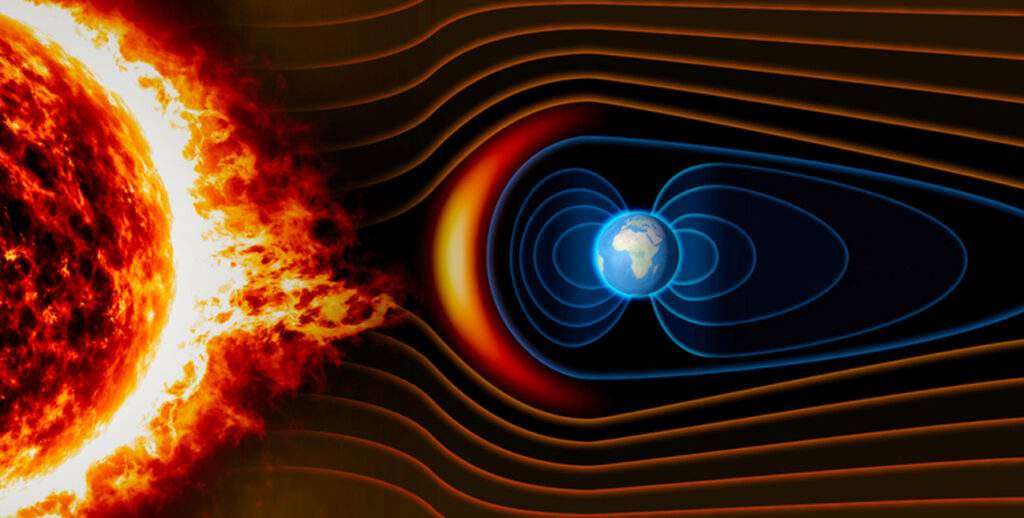
COMPETITIVE EXAM MCQs SERIES of ENVIRONMENTAL SCIENCE for UGC-NET/JRF, SLET, ARS, GATE, and other entrance tests – Environmental Geosciences – Geophysical Fields.
Syllabus Outline
- Basics of geophysics, fundamental principles, Earth’s structure, and geophysical exploration methods.
- The study of seismology (e.g. seismic waves, earthquake monitoring and prediction).
- Examination of gravity and magnetic fields with a focus on properties and applications.
- Resistivity and conductivity measurements.
- Geophysical well logging techniques and interpretation.
- Integration of remote sensing and GIS in geophysics for environmental studies.
- Applications of environmental geophysics in groundwater exploration, contamination assessment, and soil characterization.
This quiz contains the concept-based most frequently asked 25 MCQs of “Environmental Geosciences – Geophysical Fields“. Each question has a single correct/most appropriate answer.
*****
1. The process of seismic interferometry involves:
a) Studying seismic wave diffraction patterns
b) Analyzing seismic attenuation in rocks
c) Creating seismic images by combining multiple seismic records
d) Measuring the time taken for seismic waves to travel through the subsurface
2. The Curie temperature is relevant to which geophysical property?
a) Density
b) Electrical resistivity
c) Magnetic susceptibility
d) Seismic velocity
3. The phenomenon of magnetic declination refers to:
a) The angle between the magnetic meridian and the true meridian
b) The variation in magnetic susceptibility of rocks
c) The rate of change of Earth’s magnetic field with depth
d) The intensity of the magnetic field at a specific location
4. The geophysical technique that involves measuring the time taken for a seismic wave to travel through the subsurface is known as:
a) Seismic Tomography
b) Seismic Interferometry
c) Seismic Reflection
d) Seismic Refraction
5. The process of transforming raw seismic data into a subsurface image of velocity variations is known as:
a) Seismic Migration
b) Seismic Processing
c) Seismic Diffraction
d) Seismic Inversion
6. Which geophysical technique is commonly used for detecting and mapping subsurface voids or caves?
a) Ground Penetrating Radar
b) Gravimetry
c) Seismic Reflection
d) Electrical Resistivity Tomography
7. Which property of rocks is most directly related to their magnetic susceptibility?
a) Mineral composition
b) Density
c) Seismic velocity
d) Porosity
8. The concept of seismic anisotropy in rocks refers to:
a) Reflection of seismic waves at subsurface interfaces
b) Changes in seismic velocity with depth
c) Variations in seismic wave amplitudes
d) Directional dependence of seismic properties
9. The P-wave in seismic terminology refers to:
a) Parallel wave
b) Primary wave
c) Pressure wave
d) Perpendicular wave
10. The term geoid refers to:
a) A magnetic anomaly caused by geological structures
b) The subsurface layer with the highest seismic velocity
c) A type of electromagnetic wave used in surveys
d) An equipotential surface representing mean sea level
11. Which geophysical method is most suitable for detecting buried archaeological features?
a) Ground Penetrating Radar
b) Magnetometry
c) Seismic Tomography
d) Electrical Resistivity
12. Which geophysical method is primarily used for mapping subsurface structures and detecting petroleum reservoirs?
a) Gravity Survey
b) Seismic Reflection
c) Electrical Resistivity
d) Magnetic Survey
13. What property of rocks is primarily measured in a seismic survey to understand subsurface structures?
a) Electrical Resistivity
b) Magnetic Susceptibility
c) Density
d) Seismic Velocity
14. The geophysical method that relies on the principles of radioactive decay to measure subsurface properties is:
a) Gravity Survey
b) Seismic Tomography
c) Gamma-Ray Spectrometry
d) Ground Penetrating Radar
15. The term magnetic anomaly refers to the difference between the observed magnetic field and the:
a) Geomagnetic Equator
b) International Geomagnetic Reference Field
c) Magnetic field expected for a specific location
d) Earth’s magnetic inclination
16. The concept of seismic anisotropy is particularly significant in understanding the behavior of seismic waves in:
a) Sedimentary rocks
b) Metamorphic rocks
c) Crystalline rocks
d) Igneous rocks
17. The geothermal gradient is highest in regions with:
a) Active volcanic activity
b) Thick sedimentary cover
c) Low seismic velocity
d) High electrical resistivity
18. The S-wave in seismic terminology refers to:
a) Secondary wave
b) Seismic reflection
c) Shear wave
d) Seismic refraction
19. The concept of Rayleigh waves in seismic studies refers to:
a) Surface waves causing ground rolling motion
b) Seismic refractions in sedimentary rocks
c) Seismic waves travelling through the Earth’s core
d) Seismic reflections at subsurface interfaces
20. The geophysical method based on measuring the time delay and amplitude changes of seismic waves is known as:
a) Seismic Diffraction
b) Seismic Interferometry
c) Seismic Reflection
d) Seismic Refraction
21. What does the term seismic attenuation refer to?
a) The reflection of seismic waves at subsurface interfaces
b) The decrease in seismic velocity with depth
c) The absorption of seismic energy as it travels through rocks
d) The amplification of seismic waves in certain geological formations
22. Which geophysical technique is commonly used for mapping faults and fractures in the subsurface?
a) Seismic Reflection
b) Electrical Resistivity Tomography
c) Ground Penetrating Radar
d) Magnetic Survey
23. The term geothermal gradient refers to the rate of change of temperature with depth in the:
a) Ocean
b) Earth’s crust
c) Mantle
d) Atmosphere
24. In the context of geophysics, what property does the Bouguer anomaly represent?
a) Seismic Velocity
b) Electrical Conductivity
c) Magnetic Susceptibility
d) Density Variation
25. The process of transforming raw gravity data into a map of subsurface density variations is known as:
a) Fourier Analysis
b) Wavelet Transform
c) Spectral Analysis
d) Gravity Inversion
*****
Previous: Concept of Minerals and Rocks
Next: Weathering
References
- Kearey, Philip, and Brooks, Michael (2013) An Introduction to Geophysical Exploration, Wiley-Blackwell, 4th edition.
- Lowrie, William (2007) Fundamentals of Geophysics, Cambridge University Press, 2nd edition.
- Gupta, Harsh K. (2004) Fundamentals of Geophysics, PHI Learning Pvt. Ltd., 2nd edition.

